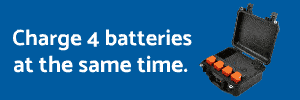- Joined
- Apr 10, 2017
- Messages
- 61
- Reaction score
- 41
- Age
- 49
Howdy.
I've been searching online but cannot locate a definitive answer, so any input from the community is appreciated...
First, how is heliport airspace classified, B, C, D or E? If considered Class E, one might be able to operate commercially withing 5 miles of a heliport and apply Class E VFR (up to SFC, 700 or 1,200 ft.).
Related, regarding the 5-mile restricted radius surrounding heliports, does that always extend vertically from SFC to whatever higher limit? Or, is the shape similar to that of a Class B and C airports, an upside down, tiered cake, permitting stepped-altitude limits?
I located the following, but it's not an official FAA source or definition. It is, however, a great system that would permit operation closer to the heliport.

Thanks!
--Ryan
I've been searching online but cannot locate a definitive answer, so any input from the community is appreciated...
First, how is heliport airspace classified, B, C, D or E? If considered Class E, one might be able to operate commercially withing 5 miles of a heliport and apply Class E VFR (up to SFC, 700 or 1,200 ft.).
Related, regarding the 5-mile restricted radius surrounding heliports, does that always extend vertically from SFC to whatever higher limit? Or, is the shape similar to that of a Class B and C airports, an upside down, tiered cake, permitting stepped-altitude limits?
I located the following, but it's not an official FAA source or definition. It is, however, a great system that would permit operation closer to the heliport.

Thanks!
--Ryan






